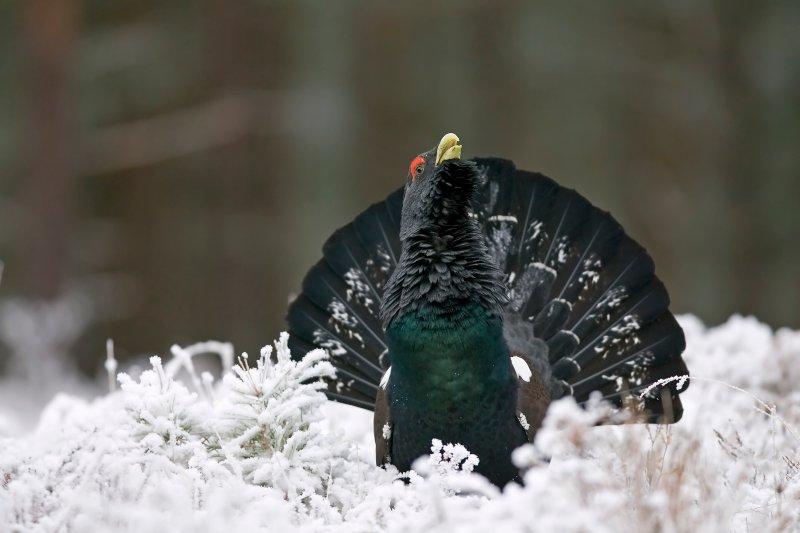Capercaillie
This impressive bird, whose main habitat is pine woodland, is the world’s largest grouse species.
Capercaillie males weigh in at around 4kg – roughly the same as a turkey – while females are about half that weight. So it seems apt that the Gaelic name for the bird is capall-coille, meaning ‘horse of the forest’.
One of Scotland’s wildlife wonders is the spectacular displays made by males at their breeding sites (leks). So sensitive are they to disturbance that the displaying males are legally protected – along with capercaillie eggs, chicks and nests.

The species has declined significantly since the 1970s to just a few small, isolated and vulnerable populations. Foresters and conservationists have responded with ‘capercaillie-friendly‘ management practices.
Protection of capercaillie
Find out how Scotland’s wild birds are protected.
Learn about birds and licensing.
Read our guidance for planners and developers on protected animals.
Find out more
Download our guidance on Capercaillie Survey Methods




